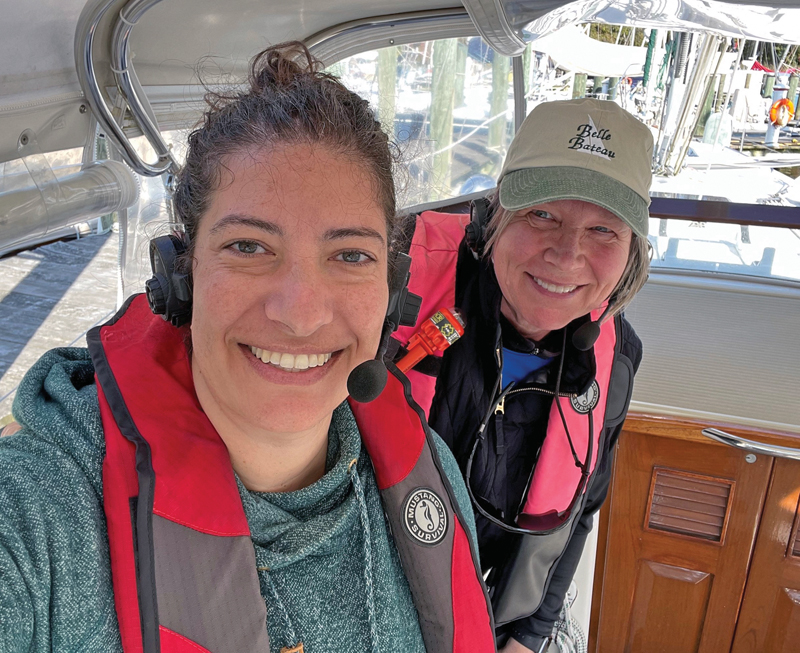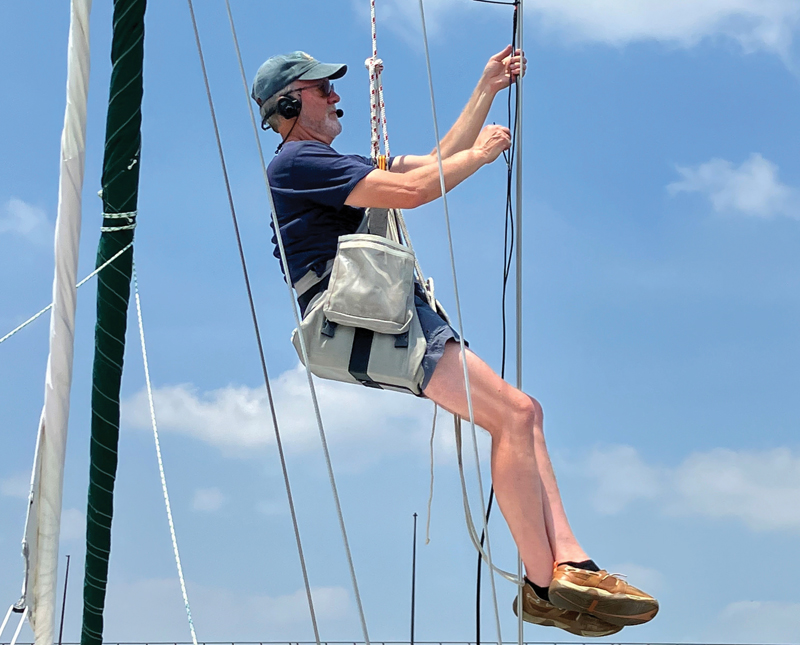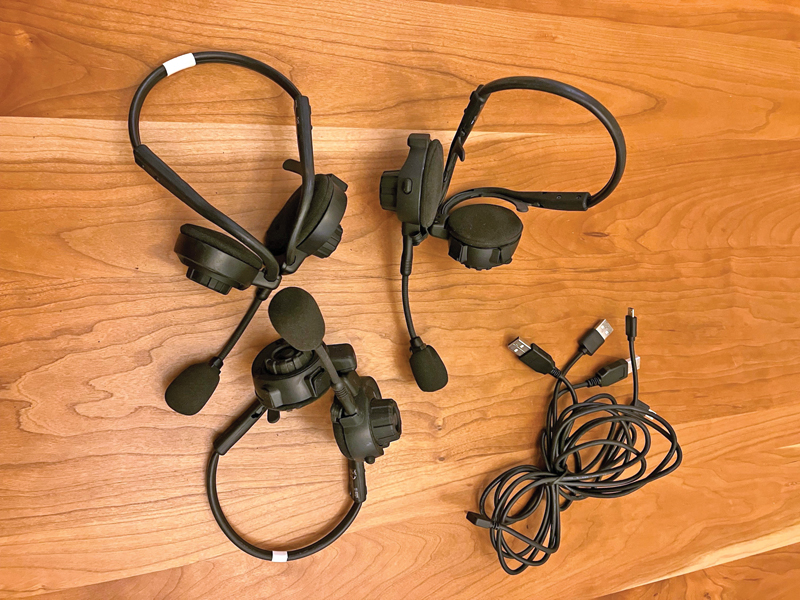Headsets are helpful when anchor, docking, mooring, and more.
We have been sailing and cruising together for 16 years and recommend headsets for better communication and safety.
Our first difficult anchoring was in a boat we did not know well or own. We had to raise our voices to be heard above the engine noise and winds and became irritated when the other couldn’t hear or understand. On our next outing, we switched to hand signals. First, we had to agree on hand signals that made sense for us. Those signals worked fine for a while, but eventually, we found them too limiting, especially when sight was blocked or two hands were needed to grab a mooring pendant. Also, how does the person at the bow signal “I think we should be 40 feet to the east?” or how does the helmsperson signal “actual depths aren’t agreeing with the charts?”

We’ve all seen it: a couple is anchoring or docking. The one at the bow is yelling at the helmsperson to slow down, go forward, go backward, stop, or turn. The person at the helm yells back, and often both become angry and frustrated. Occasionally, we see a couple using hand signals, but rarely do we see them using headsets. Why not? There is a good reason why intercom headsets are nicknamed “marriage savers!”
A changed experience
We decided to try a pair of headsets by Eartec. They completely changed our experience, making it easy to carry on a casual conversation during anchoring, docking, or picking up a mooring. We could discuss boat speed, depths, unexpected traffic, distance to dock, where to anchor, and any other topic with complete understanding, without yelling, and without either of us being frustrated or feeling bad. Dockhands often commented on our flawless approaches and departures as they witnessed firsthand the benefits of headset communications. And headsets work surprisingly well in high winds and other noisy environments.
We have since switched to Sena SPH10s which are lightweight and comfortable. They are also more expensive but well worth it. We use them every time we dock, anchor, moor, or hoist the spinnaker. We also use them when climbing the mast, removing sails for the season, and accomplishing other winterization tasks. In other words, any time we need to communicate from separate locations on the boat, we don the headsets.

Additionally, we purchased a third headset to use with crew, seamlessly involving them in boat handling. We even took all three to our bareboat canal cruise in France when traveling with non-boating friends. Because of the headsets, we could give clear instructions for maneuvering locks without yelling or frightening those who aren’t as familiar with boating. A week later on a different canal, we put all three headsets to good use with our Royal Yachting Association (RYA) training instructor on his 72-foot barge, successfully obtaining our RYA International Certificates (ICC) for inland waterways. Our instructor was able to easily communicate with both of us as we learned how to handle larger and heavier vessels on narrow waterways.

Headsets: more than just a smart communication device
Despite sharing these positive experiences, we often get resistance from others when we suggest they purchase headsets. We’ve heard all sorts of reasons. “It’s just another piece of equipment to take care of and keep charged,” or “they’re too expensive.” (The good ones run about $200 each.) We also think some consider it a badge of honor to not use headsets.
By far, the most common reason offered is: “We’re seasoned sailors, and we use hand signals just fine.” Perhaps. But recently a longtime sailor, with more than 20 years of experience cruising the Atlantic with her husband and kids, admitted that headsets could have saved her from breaking ribs when picking up a mooring last year.
Her story went something like this. Her taller and stronger son was typically assigned mooring duty, but he was absent that day. Winds were sporty. Her husband was at the wheel, and she went forward to grab the mooring with a boat hook. As she leaned over to snag the pendant, the boat hook became stuck. She tried to motion to reverse, but her short stature couldn’t be seen. Meanwhile, the boat still had forward motion. She was pinned against the lifelines with her ribs pinched. She considered whether to drop the hook but worried about damage to their propeller and boat if she couldn’t communicate in time.
Her husband came rushing forward leaving the helm unattended, not understanding what was happening and unable to hear her due to engine and wind noise. It doesn’t take long for these kind of situations to go awry. They were able to quickly resolve the situation, but she sustained several broken ribs and bruised arms. She also recounted another injury that could have been avoided with clear communication through headsets, which is why this longtime cruiser admitted that headsets might be a good idea.
We believe this story demonstrates that headsets should be regarded as important safety equipment in addition to just being a smart method of communication for the seasoned and the rookie. And they might just save a marriage, a friendship, or a few ribs!
by Captains Dudley Whitney and Cheryl Duvall
About the Authors: Captain Dudley Whitney and Captain Cheryl Duvall are both USCG Licensed Masters, Inland 100 GRT. Both also hold an RYA Inland Waterways Helmsman’s Certificate for barges up to 65 feet in Europe. They live in Annapolis and recently returned from 101 days at sea to Maine and back on their Gozzard 44 Belle Bateau: sailingbelle.net.




